A griddled yeast bread, the English Muffin is a small, round, flat yeast-leavened bread which is commonly sliced horizontally, toasted, and buttered. Their infamous nooks and crannies perfectly cradle butter, jams, and marmalades. Remember to always use a fork to split your muffins in order to get those wonderful nooks and crannies. The result will not be the same if you slice them with a knife.
I was inspired to make homemade English Muffins after watching a television baking show. I thought they would be difficult to make and probably not worth the effort. Much to my surprise, they were easy and fun to make, and the finished product was scrumptious! I always thought that English Muffins were baked, but rather, they are “griddled” and cooked at a very low temperature on the stove top. In this particular recipe, a rapid rise yeast is used which does not require proofing.
Instructions:
- Combine all of the ingredients (except the semolina or farina) in a mixing bowl, or the bucket of your bread machine.
- This is a very soft dough, so you’ll need to treat it a bit differently than most yeast doughs. If you have a stand mixer, beat the dough using the flat beater paddle until it starts coming away from the sides of the bowl, and is satin-smooth and shiny; this will take about 5 minutes at medium-high speed. When you lift up the beater, the dough will be very stretchy. If you have a bread machine, simply use the dough cycle.
- Scrape the dough into a rough ball, and place in a greased bowl. Cover and let the dough rise until it’s nice and puffy; this will take 1 to 2 hours or so.
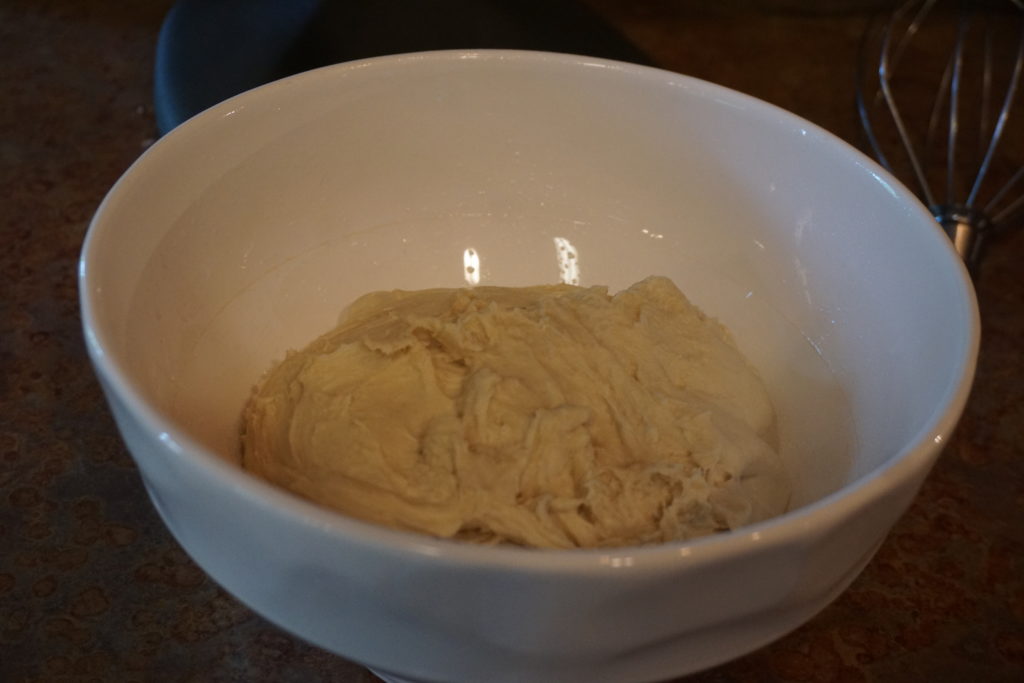
- Prepare your griddle(s). Using two griddles allows you to cook all the muffins at once; but since you probably don’t have two griddles, you’ll need to cook the muffins in shifts. Whatever you use — an electric griddle, stovetop griddle, frying pan, electric frying pan — sprinkle it heavily with semolina or farina. If you’re using a griddle or frying pan that’s not well-seasoned (or non-stick), spray it with non-stick vegetable oil spray first.

- Gently deflate the dough, and divide it into 16 pieces. Shape each piece into a smooth ball, then flatten the balls until they’re about 3″ to 3 1/2″ in diameter. I used a scale to measure the dough balls so that they would be close to the same size (75 to 80 grams each).

- The easiest way to handle and cook these muffins is to lay them right onto the cold surface you’ll be frying them on. That way, you don’t have to move them once they’re risen; and they won’t mind cooking very slowly as you fire the griddle up to its desired heat. If you don’t have enough griddle space to do this, sprinkle a baking sheet heavily with semolina or farina, and place the muffins on the sheet; they can be fairly close together. Either way, sprinkle the tops of the muffins with additional semolina or farina.
- Cover the muffins with a piece of plastic wrap and let them rest for 20 minutes. They won’t rise like crazy, but will puff a bit.
- Cook the muffins over very low heat for 7 to 15 minutes per side, until their crust is golden brown, and their interior is cooked through. When done, the center of a muffin should register about 200°F on an instant-read thermometer. If you find the muffins have browned before they’re cooked all the way through, simply pop them into a preheated 350°F oven for about 10 minutes or so, or until they’re thoroughly cooked.
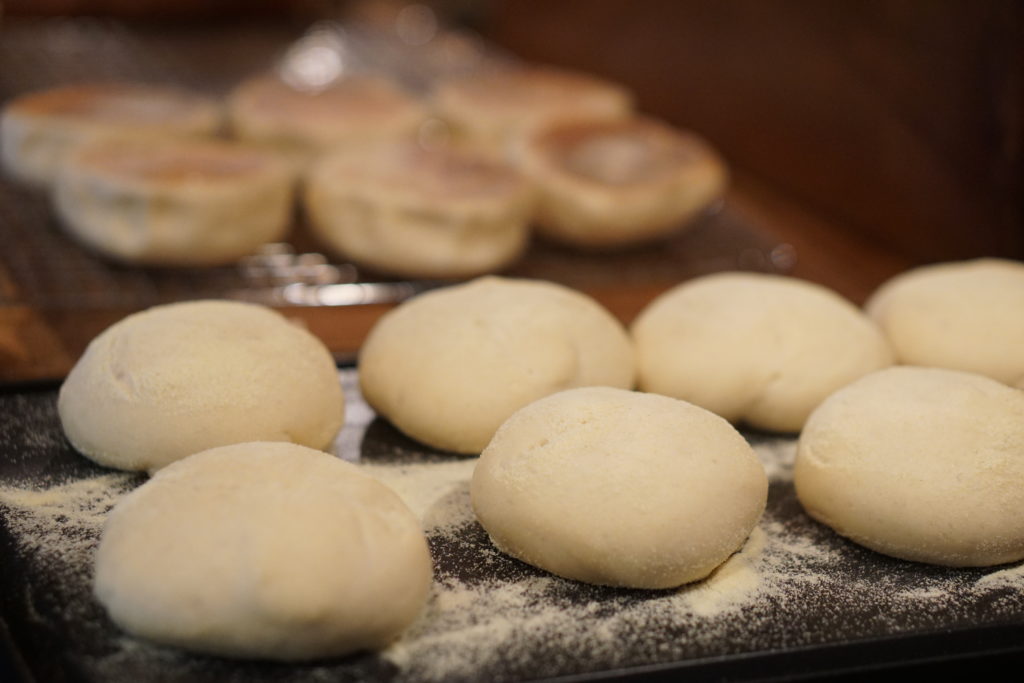

- Remove the muffins from the griddle (or oven), and let them cool thoroughly before enjoying. Remember: use a fork to split, not a knife to cut. Fork-split muffins will have wonderful nooks and crannies; knife-cut ones won’t.

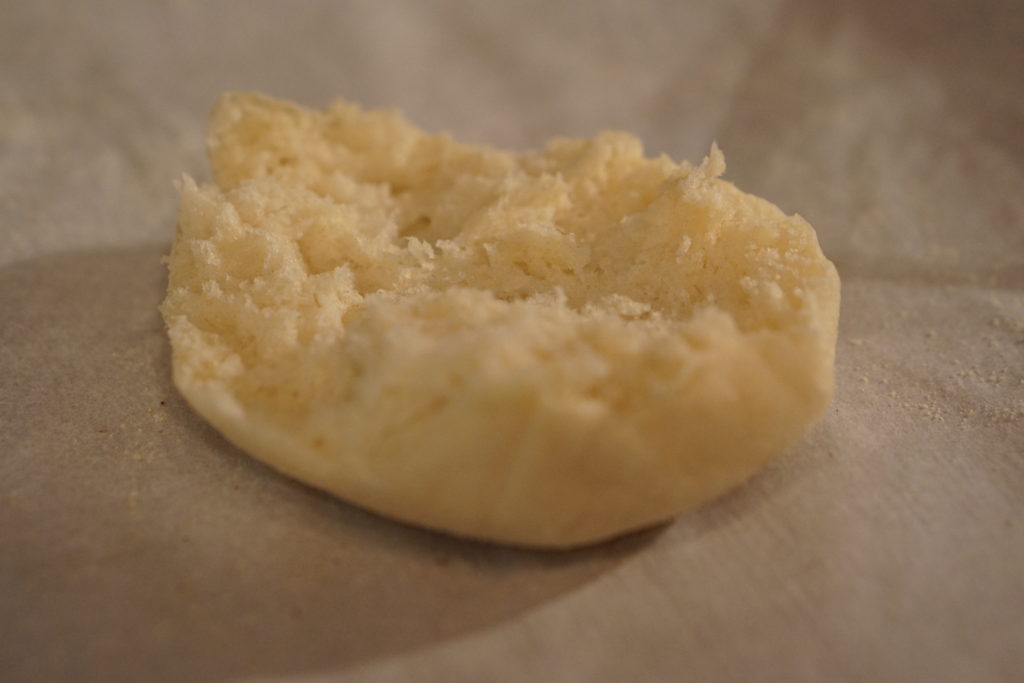

- Yield: 16 large (3″ to 3 1/2″) English muffins.
- 1 3/4 cups lukewarm milk
- 3 tablespoons softened butter
- 1 1/4 to 1 1/2 teaspoons salt, to taste
- 2 tablespoons sugar
- 1 large egg, lightly beaten
- 4 1/2 cups Bread Flour
- 2 teaspoons instant yeast (rapid rise yeast)
- semolina or farina, for sprinkling the griddle or pan
- Combine all of the ingredients (except the semolina or farina) in a mixing bowl, or the bucket of your bread machine. This is a very soft dough, so you’ll need to treat it a bit differently than most yeast doughs. If you have a stand mixer, beat the dough using the flat beater paddle until it starts coming away from the sides of the bowl, and is satin-smooth and shiny; this will take about 5 minutes at medium-high speed. When you lift up the beater, the dough will be very stretchy. If you have a bread machine, simply use the dough cycle.
- Scrape the dough into a rough ball, and cover the bowl. Let the dough rise until it’s nice and puffy; this will take 1 to 2 hours or so.
- Prepare your griddle(s). Using two griddles allows you to cook all the muffins at once; but since you probably don’t have two griddles, you’ll need to cook the muffins in shifts. Whatever you use — an electric griddle, stovetop griddle, frying pan, electric frying pan — sprinkle it heavily with semolina or farina. If you’re using a griddle or frying pan that’s not well-seasoned (or non-stick), spray it with non-stick vegetable oil spray first, before adding the semolina or farina.
- Gently deflate the dough, and divide it into 16 pieces. Shape each piece into a smooth ball, then flatten the balls until they’re about 3″ to 3 1/2″ in diameter.
- The easiest way to handle and cook these muffins is to lay them right onto the cold surface you’ll be frying them on. That way, you don’t have to move them once <g class=”gr_ gr_133 gr-alert gr_gramm gr_inline_cards gr_run_anim Grammar multiReplace” id=”133″ data-gr-id=”133″>they’re risen</g>; and they won’t mind cooking very slowly as you fire the griddle up to its desired heat. If you don’t have enough griddle space to do this, sprinkle a baking sheet heavily with semolina or farina, and place the muffins on the sheet; they can be fairly close together. Either way, sprinkle the tops of the muffins with additional semolina or farina.
- Cover the muffins (a piece of parchment works well), and let them rest for 20 minutes. They won’t rise like <g class=”gr_ gr_118 gr-alert gr_gramm gr_inline_cards gr_run_anim Punctuation only-del replaceWithoutSep” id=”118″ data-gr-id=”118″>crazy,</g> but will puff a bit.
- Cook the muffins over very low heat for 7 to 15 minutes per side, until their <g class=”gr_ gr_121 gr-alert gr_gramm gr_inline_cards gr_run_anim Punctuation only-ins replaceWithoutSep” id=”121″ data-gr-id=”121″>crust</g> is golden brown, and their interior is cooked through. When done, the center of a muffin should register about 200°F on an instant-read thermometer. If you find the muffins have browned before they’re cooked all the way through, no worries; simply pop them into a preheated 350°F oven for about 10 minutes or so, or until they’re thoroughly cooked.
- Remove the muffins from the griddle (or oven), and let them cool thoroughly before enjoying. Remember: use a fork to split, not a knife to cut. Fork-split muffins will have wonderful nooks and crannies; knife-cut ones won’t.
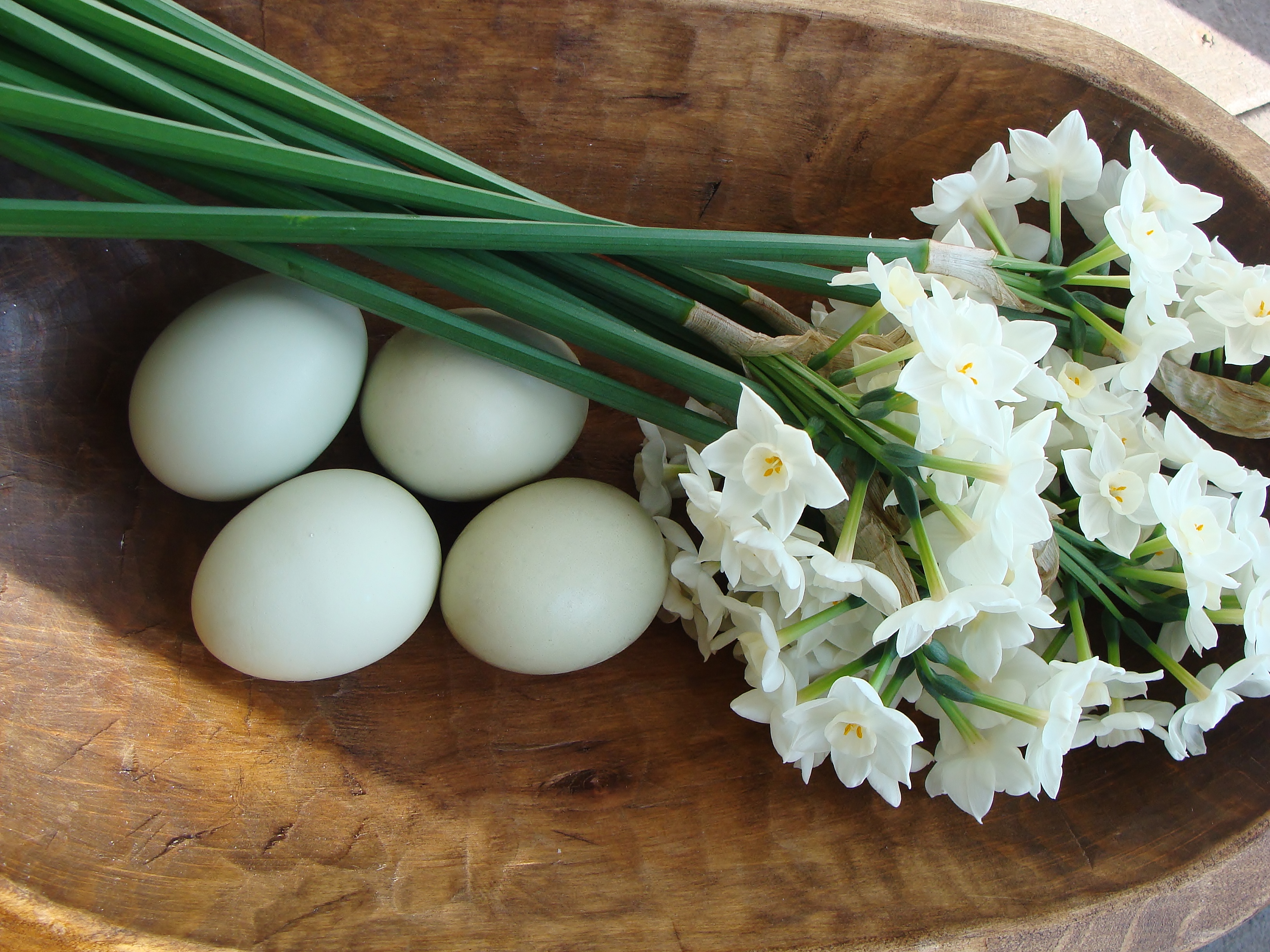



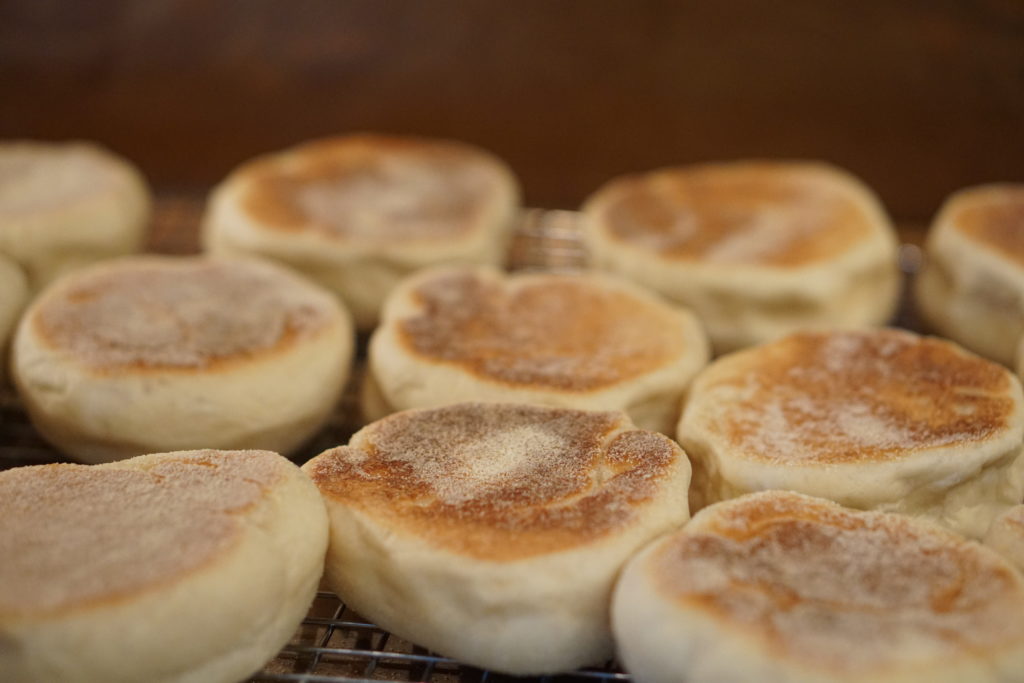
Looks lovely! And good for you for taking the time to fork-split each one! If you’re grilling batches of English Muffins, I would suggest investing in a legitimate English Muffin splitter from http://www.SiriusChef.com to make perfect nooks and crannies much more quickly 😉
Can you just bake them instead of using a griddle, or a frypan, i don’t have a griddle or an electric frypan.
Milla, I have not tried to bake them. The oven temperature would need to be very low – equivalent to the low stove-top temp. I would try them in any flat-bottomed pan. Do you have any Teflon skillets or fry pans? What about cast-iron skillet?